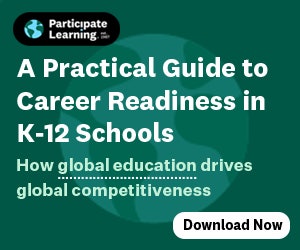
A key question is: Do existing systems adequately prepare teachers for a successful start to the school year?
Most teacher onboarding focuses on logistics: where to find supplies, how to use educational technology, and what forms to fill out. These things matter, but they don’t address the real challenges new teachers will face. STEM instruction blends interdisciplinary thinking, lab logistics, and ed-tech integration. No single person masters all these elements immediately. Schools that adopt a deliberate multi-mentor network cut attrition nearly in half; novices with a trained mentor are twice as likely to stay. The solution lies in moving beyond the traditional single-mentor model to a comprehensive support network.
The Three-Tier Support Model
Tier 1: The Daily Support Mentor This is a nearby colleague who can answer quick questions, share resources, and provide emotional support. They don't need to teach the same subject, but they should understand the school culture and be available for frequent check-ins.
Tier 2: The Content Specialist This mentor shares subject expertise and can help with curriculum decisions, assessment strategies, and content-specific challenges. They might not be in the same building, but they understand the unique aspects of teaching STEM subjects.
Tier 3: The Professional Growth Coach This person helps with long-term development, goal setting, and career planning. They understand how STEM teaching fits into broader educational contexts and can help new teachers see beyond their immediate challenges.
But structure alone isn't enough—the quality of these relationships determines success. The most effective mentorship programs I've seen have structure without being rigid. Mentors and mentees meet regularly, but the conversations are driven by the new teacher's actual challenges, not a predetermined curriculum.
Creating the right mindset around growth is equally important as providing the right structure. Show new teachers that strong STEM teaching is a process. Show examples of veteran teachers whose initial struggles led to mastery. Create cultures where it’s safe to admit you don’t know something and model learning alongside students.
The Investment That Pays Off
Effective new teacher onboarding requires time, resources, and intentional planning. But the return on investment is enormous. Teachers who feel supported and successful in their first years are more likely to stay, grow, and become mentor teachers themselves.
More importantly, students benefit immediately. New teachers who feel confident and supported create more engaging learning experiences. They’re more willing to try innovative approaches, more resilient when challenges arise, and more likely to inspire students to pursue STEM learning.
The research backs up what successful districts already know. Here are some specific examples around STEM:
- New Teacher Center’s i3 evaluation showed statistically significant gains in retention and student math scores after two years of structured induction.
- The NSF Noyce Scholarship program pairs new STEM teachers with multi-tier mentors and reports strong persistence intentions even amid pandemic disruptions.
The evidence is clear, but implementation requires commitment. The real question isn’t if new teachers can be great, but if we’ll give them the support to become so. Give new teachers the network, not just the name badge, and they’ll repay the investment in student curiosity and long-term instructional capacity.
Jason McKenna is V.P. of Global Educational Strategy for VEX Robotics and author of “What STEM Can Do for Your Classroom: Improving Student Problem Solving, Collaboration, and Engagement, Grade K-6.” His work specializes in curriculum development, global educational strategy, and engaging with educators and policymakers worldwide. For more of his insights, subscribe to his newsletter.





























